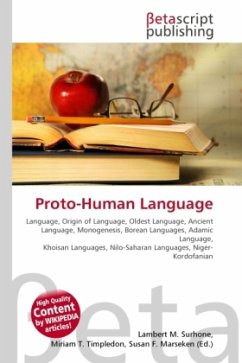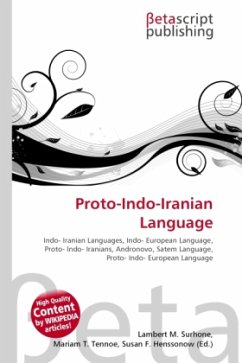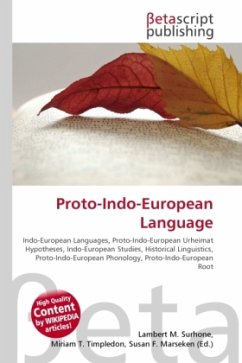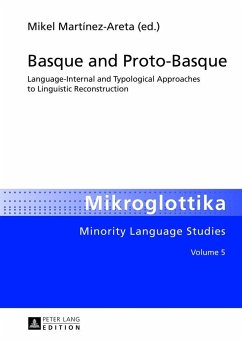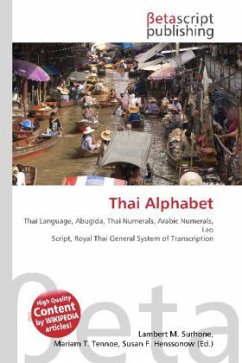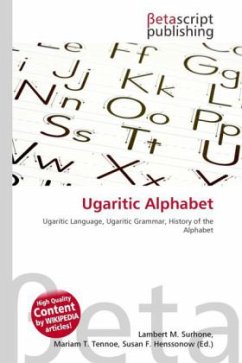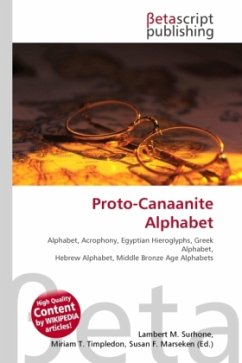
Proto-Canaanite Alphabet
Versandkostenfrei!
Versandfertig in 6-10 Tagen
26,99 €
inkl. MwSt.

PAYBACK Punkte
13 °P sammeln!
High Quality Content by WIKIPEDIA articles! The Proto-Canaanite alphabet is a consonantal alphabet of twenty-two acrophonic pictorial glyphs, found in Levantine texts of the Late Bronze Age by convention taken to last until a cut-off date of 1050 BC, after which it is called Phoenician. About a dozen inscriptions written in Proto-Canaanite have been discovered in modern-day Israel and Lebanon. While a descendant script from the Egyptian hieroglyphs, it is also the parent script of Phoenician, itself the ancestor of nearly every alphabet in use today, from Arabic, Greek, Hebrew, Roman, Cyrillic...
High Quality Content by WIKIPEDIA articles! The Proto-Canaanite alphabet is a consonantal alphabet of twenty-two acrophonic pictorial glyphs, found in Levantine texts of the Late Bronze Age by convention taken to last until a cut-off date of 1050 BC, after which it is called Phoenician. About a dozen inscriptions written in Proto-Canaanite have been discovered in modern-day Israel and Lebanon. While a descendant script from the Egyptian hieroglyphs, it is also the parent script of Phoenician, itself the ancestor of nearly every alphabet in use today, from Arabic, Greek, Hebrew, Roman, Cyrillic, and Berber in the West to Mongol, and perhaps even Hangul in the East. The Hebrew alphabet remains the closest to its predecessor, as only the form of the letters has been modified unsurprising, since Hebrew is a Canaanite language and had, in its original pronunciation, roughly the same set of consonants as the dialect that the alphabet was devised for.



